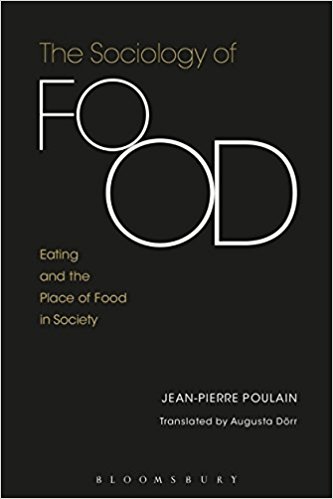In The Sociology of Food: Eating and the Place of Food in Society, Jean-Pierre Poulain offers an account of how food has emerged as a new field within sociological research. With the book also addressing the challenges of establishing a sociology of food as a single discipline, it gives a timely and insightful narrative to readers interested in finding out more about this developing sphere of research, recommends Gurpinder Lalli.
The Sociology of Food: Eating and the Place of Food in Society. Jean-Pierre Poulain (trans. by Augusta Dörr). Bloomsbury. 2017.
For anyone interested in the place of food in society, this newly translated work from leading food scholar Jean-Pierre Poulain offers an insightful account of the role of food and how it has come to be a new field in sociological research. The Sociology of Food provides a refreshing take on how to interpret food in today’s society whilst also establishing new sociological theoretical connections. Moreover, it discusses a number of challenges and issues in being able to establish what Poulain refers to as a ‘sociology of food’ as a single discipline. Nonetheless, he highlights the key movements, and concludes by suggesting that more work is needed to forge a sociology of food.
Poulain offers an account of the sociology of food by considering it as a distinctive field, and explores the possibility of studying food through social space. Eating is an act of sharing: a social, meaningful act established within cultural frameworks (xix). The Sociology of Food outlines how the meal is at the heart of the socialisation process in two specific senses. Firstly, it is a site of apprenticeship where the life rules governing a group are learned; and secondly, a place for the sociality of sharing and conviviality. Food as a nutritional social fact and a social fact are considered as two distinct areas that contribute to the well-being and health of humans. This review offers an overview of the two sections in which the textbook has been divided: the permanent and changing aspects of modern eating practices; and the shift from sociological interest in food to sociologies of food.
Before highlighting the key narratives in both parts, it is useful to consider that it was not until the late 1970s that the social sciences turned their attention to food, beginning with history and sociology (xvii). This saw the birth of a new social scientific heritage, particularly in the period 1990-2000, where historians, sociologists, anthropologists and psychologists began to highlight emerging discourses in the field of food studies.
 Image Credit: (Michael Stern CC BY SA 2.0)
Image Credit: (Michael Stern CC BY SA 2.0)
In the first part of The Sociology of Food, Poulain explores localisation and the dietary issues that surround food. This includes five specific chapters that introduce the globalisation of the food supply; the domestic and economic spheres of culinary activity; the evolution of eating practices; food risks and safety; and obesity and the medicalisation of consumption. In Chapter Two, a discussion is developed concerning the domestic and economic spheres and Poulain highlights the similarities between agricultural activities in terms of the growing of crops and household food-related tasks. By this, Poulain draws on a comparison between food-related tasks within the home with wider society and highlights how gender inequality is prevalent in both spheres. He concludes by stating that although social roles are changing, it is happening gradually, and that food-related domestic tasks are still mainly associated with women.
In Chapter Three, the work of Claude Fischler (1979) is cited and his term ‘gastro-anomie’ is introduced. This was first developed by Fischler as a way of describing the consequences of modern eating practices, which are themselves characterised by three concurrent phenomena (41): an overabundant food supply; the relaxing of social constraints; and multiple discourses on food practices and their contradictory aspects. To provide an overview, Fischler makes links to Emile Durkheim’s concept of anomie which is a social condition in which there is a disintegration of norms and values, also described as ‘normlessness’. By gastro, Fischler refers to the stomach and nomos as the rules that govern food. Gastro-anomie is therefore associated with social deregulation (43).
In Chapter Four, the connotations of the term ‘food security’ are introduced, but more importantly its interpretation. The notion of risk is said to cover a series of dangers linked not only to a scarcity of food but also to its quality (63). In short, there are two types of risk that are identified and used to distinguish between phenomena: those who lack or live in fear of lacking food; and those who are afraid of what they eat. Consequently, a debate on food and eating is actually about much more than it being a common activity for all. It is also a debate on the ways in which society is organised.
Chapter Five introduces obesity and the medicalisation of everyday food consumption. Three key questions are posed in the chapter that contest the view of obesity as merely a physical issue: why obesity is unequally distributed across the social scale; what transformations in the structure of the food industry sector or in eating practices might explain the rapid development of obesity in today’s society; and how we can change eating habits. Ultimately, it is the issue of stigmatisation as discussed by Poulain that is neglected, and importance rests in trying to recognise these socially constructed aspects of obesity as distinct from the medical dimension. Moreover, sociohistoric and anthropological interpretations highlight the problem of obesity, which is partly said to result from the transformation that took place in the way society interprets the ‘large body’ and ‘fat-based products’ (111).
The second part of the text is dedicated to sociological interest in food and includes six chapters on major socio-anthropological movements; epistemological obstacles; sociologies of food and attempts to forge connections; the sociology of French gastronomy; and the notion of ‘food social space’. In the final chapter of the book, Poulain highlights the movement of cultural studies surrounding food and eating practices in the context of English- and French-speaking worlds. He also identifies the challenges of food studies and points out that research always involves careful investment and substantial knowledge of a discipline, including its paradigms, theoretical frameworks and methodologies.
In Chapter Six, Poulain argues that whilst it is possible to encounter aspects of eating in most sociological domains (i.e. rural sociology, work, mobility, health and illness), it is still not feasible to establish a sociology of food through food as a singular lens. The links that are established to the act of eating are mostly implicit and not justifiable. However, this is not to say that a sociology of food does not exist at all, but it is rather embedded within thematic sociological perspectives.
Chapter Nine confirms this view as Poulain argues that a single sociology of food has not been established: at this present time, we still have sociologies (168). Whilst this text makes gargantuan leaps to discover a sociology of food, it also recognises that it is very much an emerging discipline, and that in order to exist as a single field that has influence on policy, more theories and methods need to be developed. Nonetheless, a very topical and insightful narrative is developed in a text that draws readers into the unique and developing discipline surrounding the sociology of food.
This review originally appeared at the LSE Review of Books.
Please read our comments policy before commenting.
Note: This article gives the views of the authors, and not the position of USAPP– American Politics and Policy, nor of the London School of Economics.
Shortened URL for this post: http://bit.ly/2DP8kfp
——————————————–
About the reviewer
Gurpinder Lalli
For his PhD, Gurpinder Lalli carried out an ethnographic case study on the social aspects of the school meal, adopting a social constructivist and Foucauldian lens to interpret the data. For this reason, he has since become interested in exploring the social aspects of food.


 Find this book:
Find this book: 



